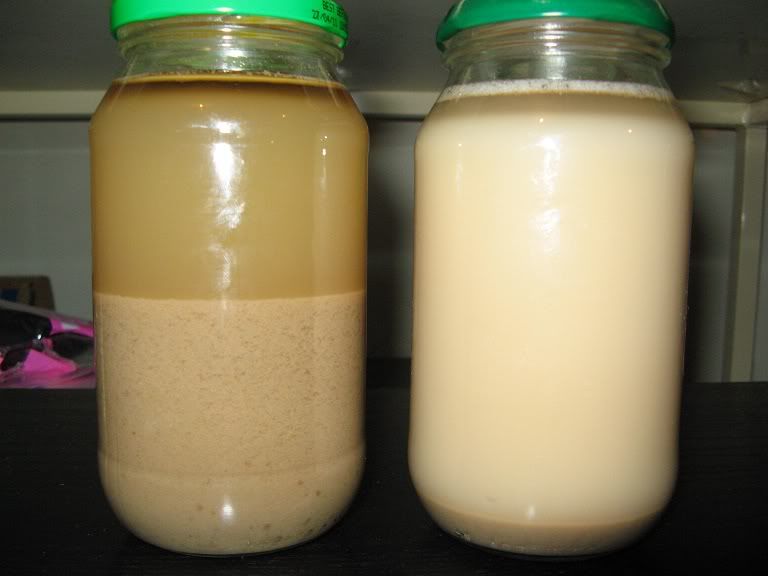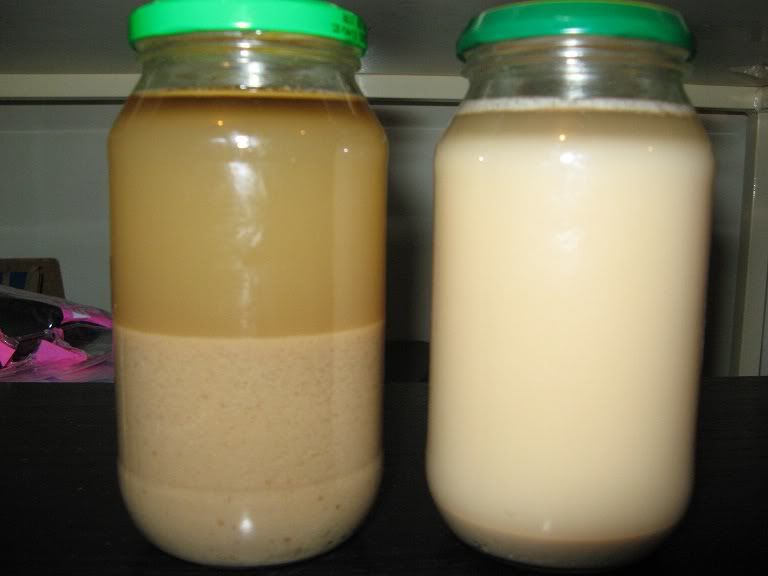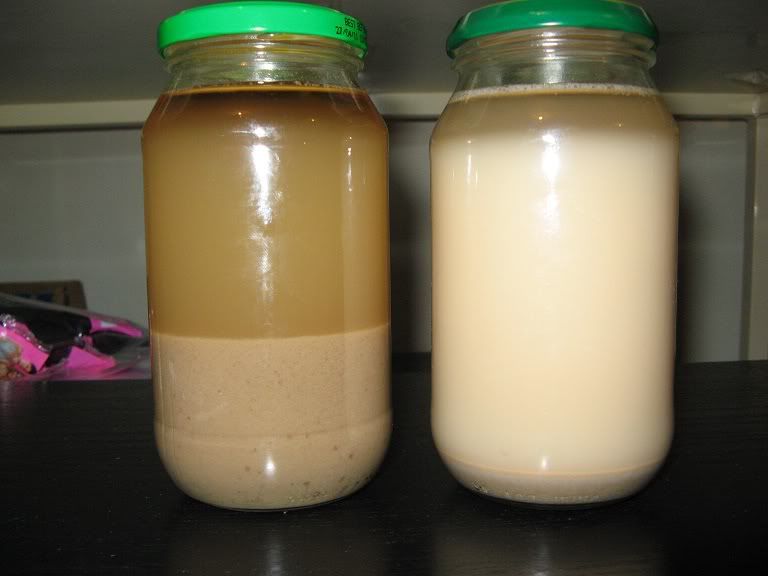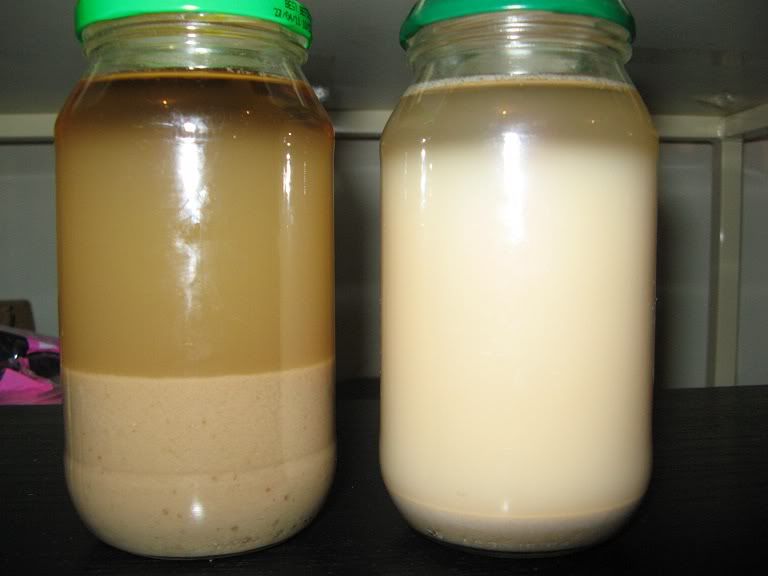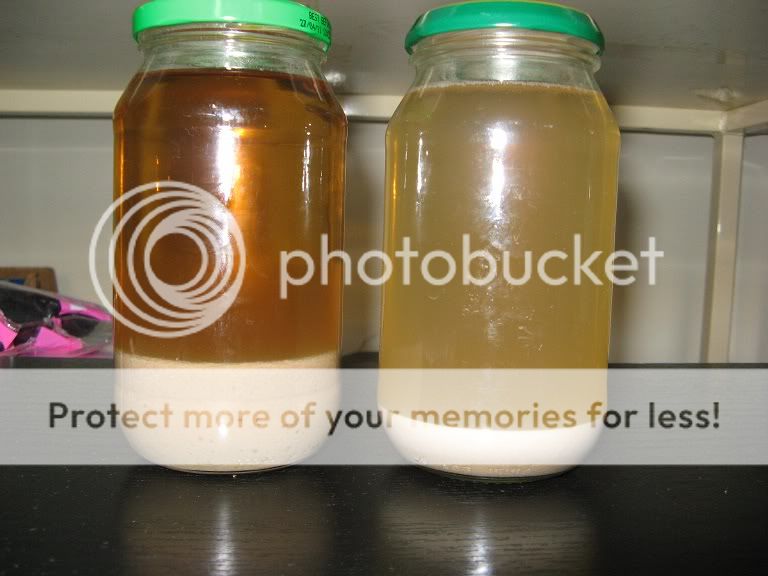Rinsing yeast in water is a useful technique to either remove the trub and break material so the yeast from a yeast-cake can be repitched, or to clean the yest before long-term storage. The technique is easy enough to do, but the biggest question seems to be how to tell the yeast from the break and trub that should be discarded.
This experiment compares a jar of trub and break with a jar of yeast as they both settle over time.
On the left is a jar containing (mostly) only break material and trub, it was harvested after double-dropping one day after fermentation started. I use a CFC so all the cold break ends up in the fermentor, a slotted copper pipe drains from the kettle so there may also be a smaller amount of hot-break but not too much hop-residue.
The jar on the right contains only fresh and healthy easy top cropped yeast.
0 Minutes, both jars freshly shaken:
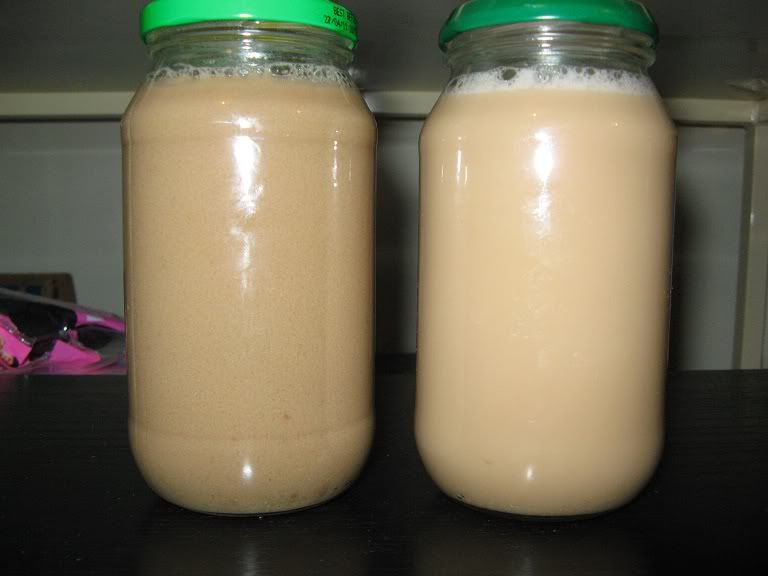
The trub is more grainy in appearance while the yeast is a homogeneous mixture in suspension.
5 Minutes:
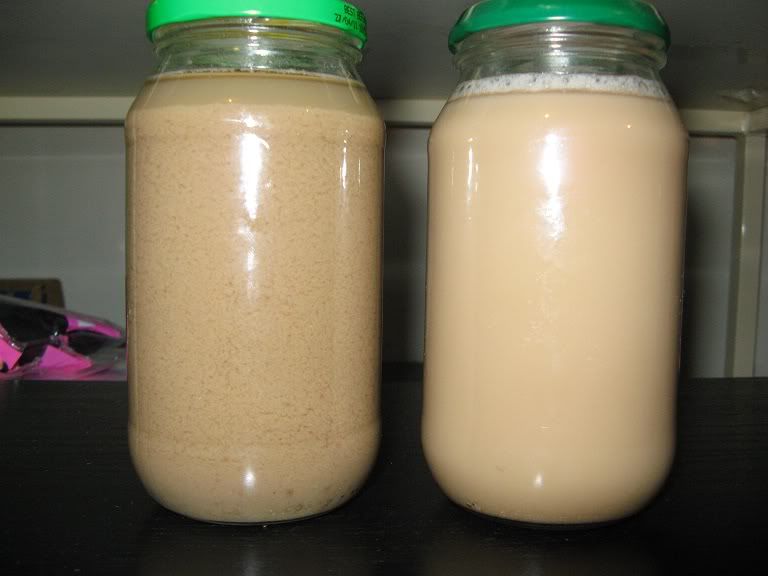
The trub has started to settle a little, and all the yeast is still in suspension.
10 Minutes:
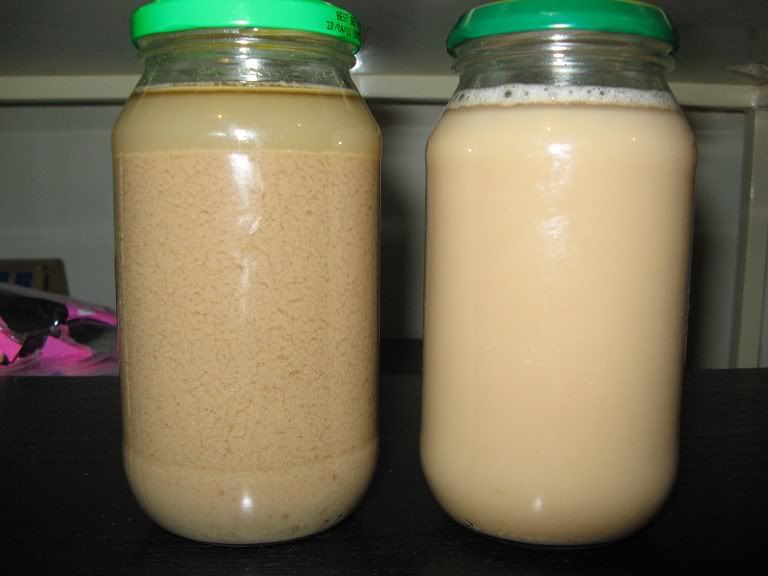
Yeast still in suspension, trub settling more including some compaction at the bottom of the jar that looks a little like the yeast, but the yeast has not compacted at all yet.
15 Minutes:
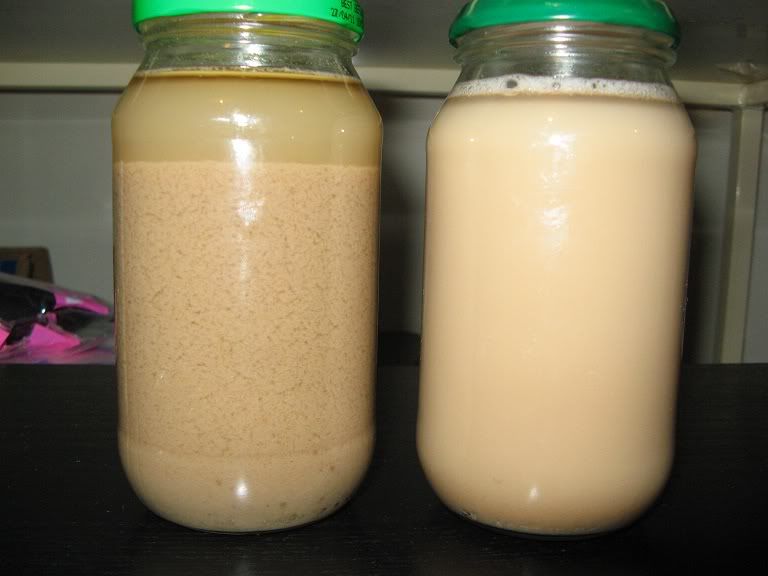
More settling, about this stage is when you'd be able to leave much of the trub behind but retain all the suspended yeast.
20 Minutes:
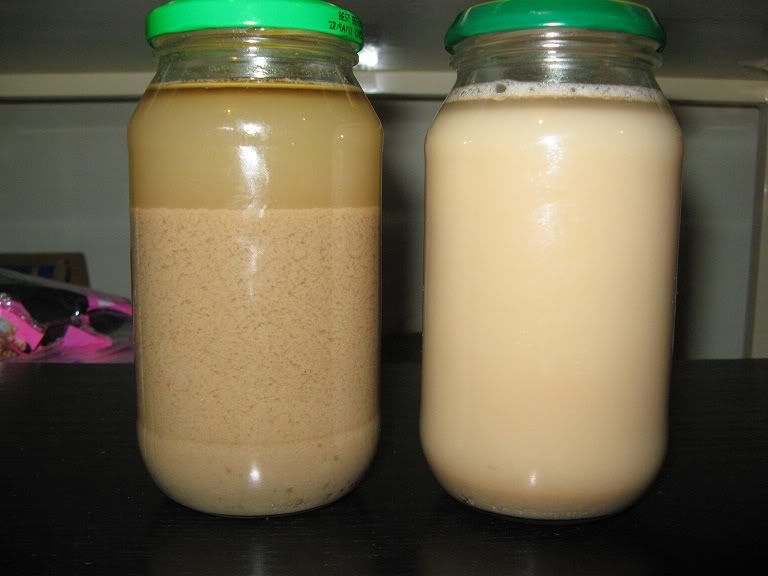
Here we see the yeast has just started to settle out at last, while the trub continues to settle well.
Decanting the yeast-suspension from the trub much after this point means you may leave some of the more flocculant yeast behind.
30 Minutes:
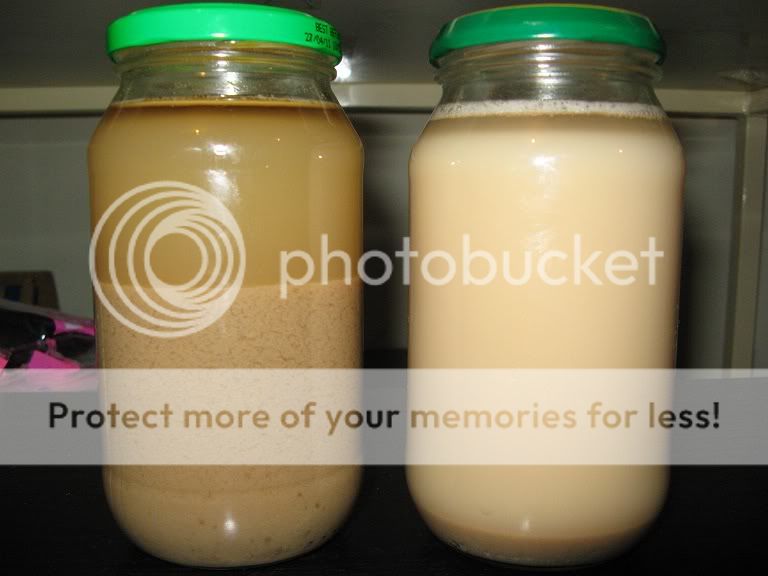
The layer of yeast is starting to compact, but much of it is still in suspension.
This experiment compares a jar of trub and break with a jar of yeast as they both settle over time.
On the left is a jar containing (mostly) only break material and trub, it was harvested after double-dropping one day after fermentation started. I use a CFC so all the cold break ends up in the fermentor, a slotted copper pipe drains from the kettle so there may also be a smaller amount of hot-break but not too much hop-residue.
The jar on the right contains only fresh and healthy easy top cropped yeast.
0 Minutes, both jars freshly shaken:

The trub is more grainy in appearance while the yeast is a homogeneous mixture in suspension.
5 Minutes:

The trub has started to settle a little, and all the yeast is still in suspension.
10 Minutes:

Yeast still in suspension, trub settling more including some compaction at the bottom of the jar that looks a little like the yeast, but the yeast has not compacted at all yet.
15 Minutes:

More settling, about this stage is when you'd be able to leave much of the trub behind but retain all the suspended yeast.
20 Minutes:

Here we see the yeast has just started to settle out at last, while the trub continues to settle well.
Decanting the yeast-suspension from the trub much after this point means you may leave some of the more flocculant yeast behind.
30 Minutes:

The layer of yeast is starting to compact, but much of it is still in suspension.





